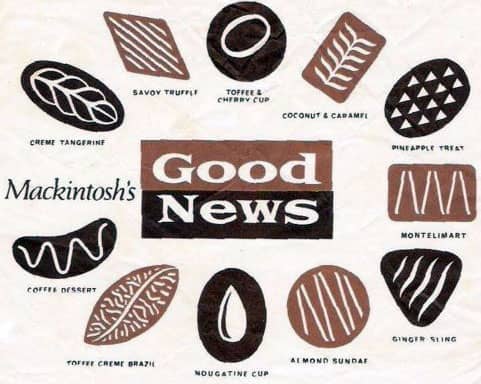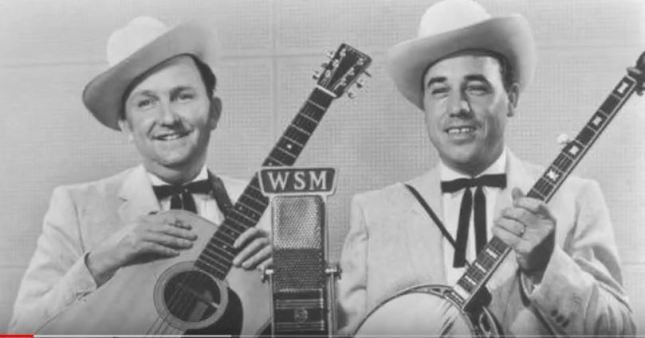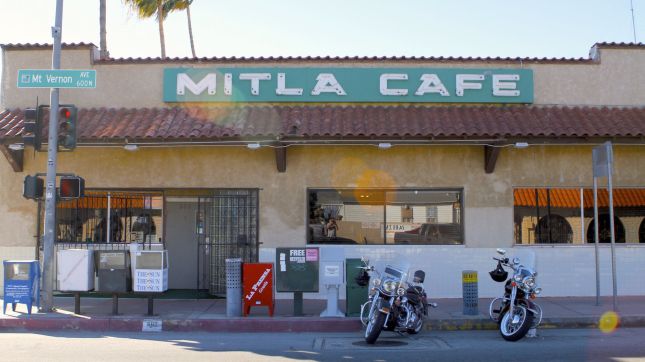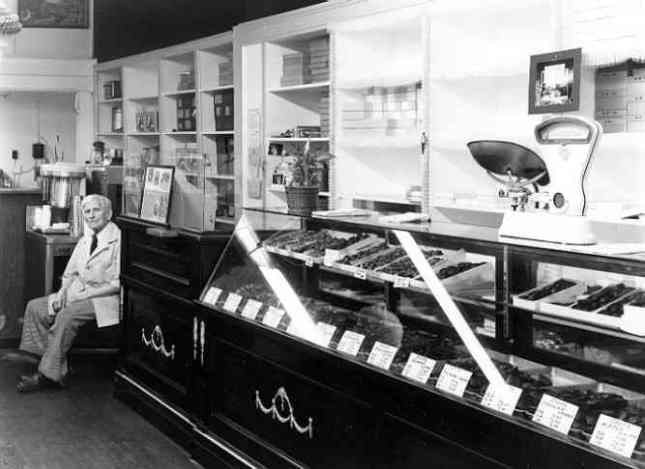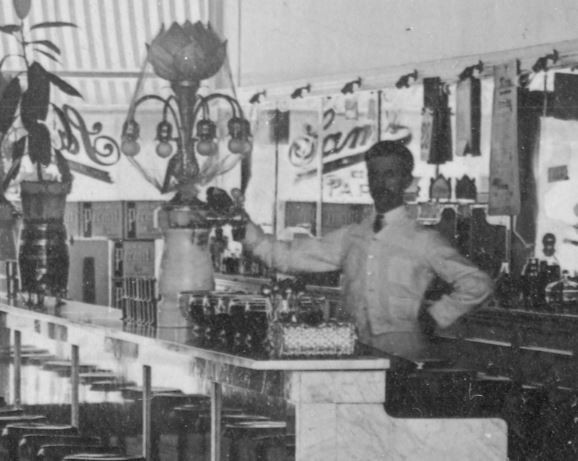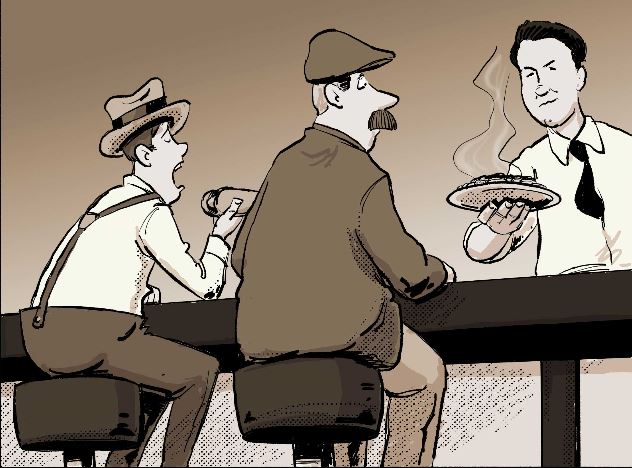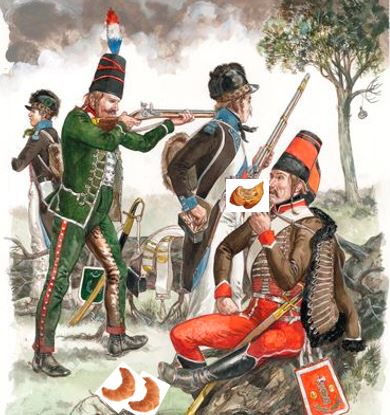
The Swanson Premium Goo Goo Cluster from Nashville.
It’s really been a Goo Gooey kind of week. My sister texted me last night from Nashville. “Hey – we went to the Goo Goo Candy store and I brought you back some Goo Goo Clusters.” Awesome, I thought. She and her fellow Hockey Moms were there on a girls’ getaway weekend. The great news was that not only did she bring me the three standard Goo Goo varieties, but also, their current Premium Goo Goo, called the Swanson, that is only sold at the Nashville mother-store.
Now hockey moms are a different breed than say the standard soccer or football moms. They’re tougher. They can withstand the cold temperatures of the hockey rink, and still have a broader yell-range than other moms. Their ref-yelling octaves go both higher and lower than other sport moms. And, they have more sweaty accessories per kid to clean in between games.
So of course I researched the Swanson and other Premium Goo Goos. What I found was a Chocolate Valhalla of amazing Premium Goo Goo varieties. All the Premium Goo Goos come with tongue-in-cheek Nashville humor. The Swanson is named after the character Ron Swanson in the comedy series Parks and Recreation. It has French Toast, Maple Bourbon-candied Gifford’s bacon, pecan praline nougat, bourbon caramel and milk chocolate. Oh my Goo Goo!
The Goo Goo Store in Nashville is a part store, part dessert and milkshake bar, and part Chocolate University. It’s located in downtown Nashville, across from the Johnny Cash Museum. It’s also the birthplace of all handmade Premium Goo Goos. The premium Goo Goo is a genus marketing tool that Goo Goo developed about three years ago. Not only do they expand the brand in unique ways, it allows them to celebrate the chefs, tastes and culture of Nashville and the South.

The first Premiums were collaborations with the likes of breweries and Southern institutions. One of the first was a holiday Premium called the Snowman Jack, made with Nashville Jackalope Brewery’s Snowman Stout infused chocolate ganache, peppermint nougat, and crushed chocolate chip cookies, covered in white chocolate. It’s kind of the inverse of Covington, Kentucky, Braxton Brewery’s Claus Peppermint Stout, with Doscher peppermint candy cane.
 S
S
Another collaboration – with Southern Living Magazine – was the Hummingbird Goo Goo. Named after one of my favorite cakes – kind of a tropical, Southern version of the carrot cake – this Premium Goo Goo has pecan butter, pecans, banana chips, caramel, vanilla wafer and whipped pineapple white chocolate cream cheese ganache, all covered in dark chocolate. There’s also a Red Velvet Premium Goo Goo. You can start to see all the Southern flavors here.
The Summer Chef Series was started in 2015 as a result of a dinner Nasvhille chef Dale Levitski of Sinema Restaurant + Bar was preparing at the James Beard House in New York City. He approached Goo Goo about a sweet that would put a purely Nashville riff on this dinner. Goo Goo was down with the collab. and the Rocky Roadkill Goo Goo Cluster – featuring peanut butter, marshmallow, pretzels, peanuts and potato chips – was born.

So then Goo Goo’s Marketing Director, Beth Sacahan, contacted 8 Nashville chefs that year and started the Summer Chef Series. Chef Hal at my favorite restaurant in Nashville – Lockeland Table (they make a mean Nashville Hot Pig Ear) – came up with the Coal Miner’s Surprise, which has house-smoked pecans, orange-scented caramel, and J.D. Dickinson’s West Virginia sea salt, covered in dark chocolate.
Other Premiums that came out that year were The South of Somewhere Goo Goo by Chef Matt Farley of Southern Steak and Oyster (a crispy rice treat, Nutella, toasted hazelnut, dried strawberry Goo Goo). Nashville chef Karl Worley of Biscuit Love collaborated to create a Premium Goo Goo inspired by their dessert of the same name. The Gertie is made with peanut butter, pretzels, caramelized banana jam and vanilla wafers all covered in dark chocolate.
I could go on all day about the ingenuity of these chefs in the Goo Goo Summer Series. Some other delicious sounding ones were Hey, Paisan! Chef Tony Galzin’s (Nicky’s Coal Fired) Premium Goo Goo, using Averna amaro caramel, toasted pistachios, and Amarena cherry nougat, all covered in dark chocolate, then sprinkled with Trapani sea salt.
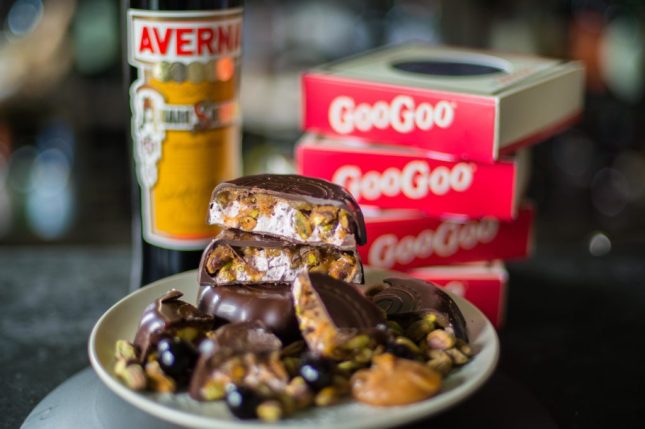
Then there’s the Bananas Bryan Goo Goo from Chef Bryan Lee Weaver of Butcher & Bee Nashville – a banana pudding ganache, toasted marshmallows, vanilla wafers and caramel covered in milk chocolate. Pat Martin created the Whole Hog Goo Goo – a spicy pig fat-candied pecans, molasses nougat, fig jam and milk chocolate sprinkled with sea salt.
Chef John Lasater of Hattie B’s creation, the Goo Goo Cluckster, pays homage to THE Nashville favorite: hot chicken and waffles. It’s made with spicy chili ganache, maple syrup caramel, brown sugar maple syrup nougat and Jeni’s Waffle Cone Crunch, all coated in dark chocolate.
The Orange Blossom Special sounds amazing -it has orange cardamom caramel with Willa’s Tennessee Wildflower Honey Shortbread and a vanilla bean pistachio nougat, all covered in milk chocolate.
There’s even a nod to India with the Bollywood Y’all Goo Goo, created by Chef Maneet Chauhan This unique one is made with spicy cashews, fried chickpea pearls, crispy rice snacks, and caramel with a hint of lime, all covered in dark chocolate. Holy Mumbai!
After reading about all these Premium Goo Goo flavors, I thought, how cool it would be for Cincinnati to bring back the Goober Cluster Doschers used to make.” We could do a Chef’s series leading up to our Cincinnati Food & Wine Classic, as a sort of a “Take This Nashville,” nod and invent our own flavors.
I’m thinking Opera Cream or Kentucky Pulled Cream candy in place of the marshmallow nougat. Or a Cincinnati Chili spiced chocolate with crunchy oyster crackers. How about a Black Forest Goober, as a nod to our German heritage. Hey, even a Goetta-A-Go-Go Goober might even be a winner! Ok Cincy Chefs – start brainstorming!








